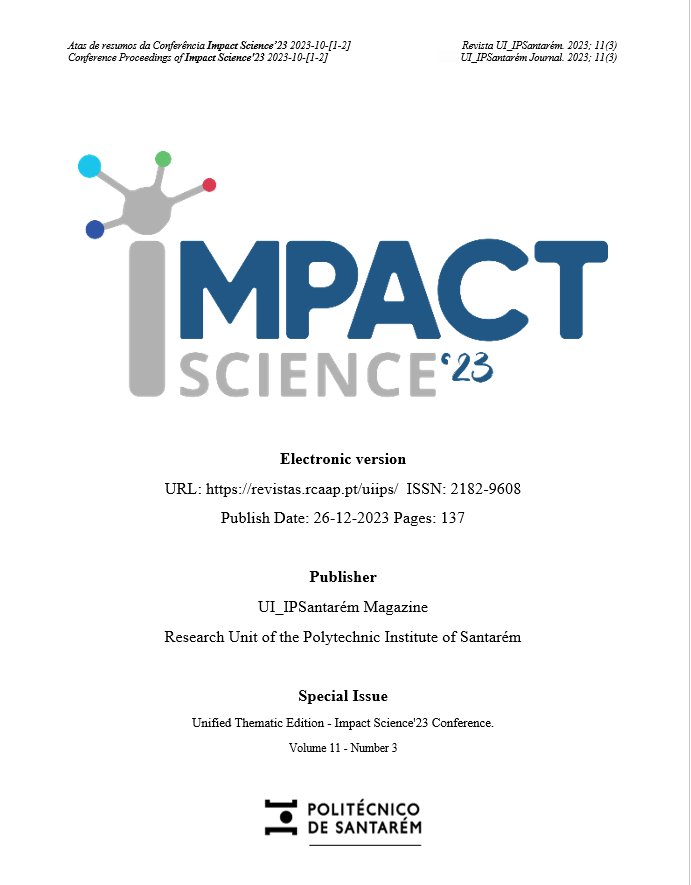Precision management in water resources - practical demonstration cases
DOI:
https://doi.org/10.25746/ruiips.v11.i3.32547Keywords:
Water use efficieny, Gulbenkian água, Olive growing, Precision agriculture, Monitoring technologiesAbstract
The efficient use of water is now a necessity for all farmers given the growing constraints on its current and future availability. The H2Oliva project, funded by the Calouste Gulbenkian Foundation, aimed to promote and demonstrate efficient irrigation water management practices, with the support of currently existing monitoring technologies. The project had a complementary logic in the three thematic sessions that were carried out, approaching all the theoretical and practical concepts necessary for the efficient use of water. The methodology used was based on the “learning-by-doing” principle and sought to ensure that participants followed the different stages of implementation of a roadmap aimed at the efficient use of water, where they could experience first-hand the advantages, disadvantages, challenges and opportunities of different technologies. The sessions, with a theoretical and practical component, were held in two regions, in order to reach a greater number of producers.
In the first session, and serving as a basis for the evolution of irrigation management, the soil-water relationship was explored. Participants were able to watch soil apparent electrical conductivity (ECa) being mapped, discuss its relationship with soil texture and water retention capacity, using this information to support the selection of monitoring sites in each plot. In the following session, the topics covered were: the water balance in the soil, the crop's water needs, irrigation management in the olive grove and the technologies available for monitoring, as well as the use of vegetative indices in decision support. Several methods of monitoring water in the soil are listed, as well as several tools to obtain vegetation indices (satellite and drone), with the advantages and disadvantages of each option being discussed. Finally, in the last session, the final balance of the campaign was carried out with regard to irrigation management, addressing the planned irrigation allocation and the actually provided to the crop, identifying good practices, hypotheses for improving irrigation management and indicators of efficient use of water for the crop. At the same time, the project provides various educational resources such as leaflets and videos that can be consulted online.
Thus, to enhance the transfer of knowledge, this project stood out for allowing participants to monitor the cultural cycle in the three plots monitored in the project and to have direct contact with all the steps and technologies associated with carrying out an irrigation of precision. With the use of concrete examples, through the accompaniment of the cultural cycle by the participants, it was possible to translate the basic academic knowledge into real implications observable in the plots, following the principle of “learning-by-doing”. There was a general interest in the topics discussed, with 100% of the participants indicating this interest and stating their intention to participate in other actions of the project. In addition, the effective transmission of knowledge was also verified, since more than 90% of the participants indicated that they intend to use the techniques and/or technologies presented and that they feel capable of using the knowledge transmitted throughout the sessions in their own production fields.
Downloads
Published
How to Cite
Issue
Section
License
Copyright (c) 2023 Artur Saraiva, Raquel Costa Saraiva, Anabela Grifo, Albertina Ferreira, Mafalda Ferreira, Samuel Guerreiro, Nuno Barba, Ana Paulo, Margarida Oliveira

This work is licensed under a Creative Commons Attribution-NonCommercial-NoDerivatives 4.0 International License.
Authors publishing in this journal agree to the following terms:
Authors retain copyright and grant the journal the right of first publication, with the article simultaneously licensed under the Creative Commons Attribution License that allows sharing of the work with acknowledgement of authorship and initial publication in this journal.
Authors are permitted to enter into additional contracts separately for non-exclusive distribution of the version of the article published in this journal (e.g., publish in an institutional repository or as a book chapter), with acknowledgment of authorship and initial publication in this journal.
Authors have permission and are encouraged to publish and distribute their work online (e.g., in institutional repositories or on their personal webpage) at any point before or during the editorial process, as this may generate productive changes, as well as increase the impact and citation of the published work.



